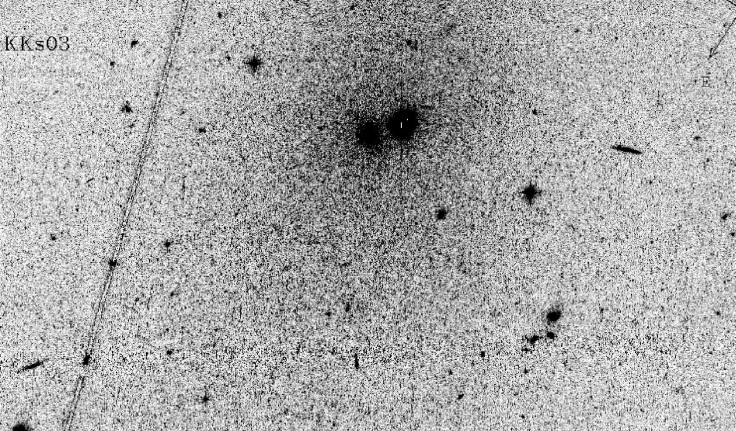Scientists Discover New 'Dwarf Galaxy' 7 Million Light Years Away

Our Milky Way galaxy has a neighbor we hadn't met yet. A team of Russian and American scientists has discovered a previously-unknown dwarf galaxy located about 7 million light years away from our own. Astronomer based at the Special Astrophysical Observatory in Karachai-Cherkessia, Russia, spotted the tiny galaxy using the Hubble Space Telescope’s Advanced Camera for Surveys in August.
Called KKs3, the newly-uncovered galaxy is part of the famous “Local Group” of roughly 50 known galaxies that contain both the Milky Way and the Andromeda. But it’s much smaller than our own: Scientists estimate that KKs3 has just one-ten thousandth of the mass of the Milky Way.
“Dwarf spheroidal” galaxies like KKs3 have no spiral arms and lack any gas or dust, the substances needed to create new stars. Scientists believe that gas and dust may have been stripped by nearby galaxies or from an early burst of star formation that used up all the gas. They are much older than other galaxies, and because they’re so ancient, the light from their stars is very dim.
The discovery is a notable one because scientists are questioning how many similar dwarf galaxies have gone unnoticed thus far. KKs3 is the second dwarf spheroidal galaxy to be found in the Local Group. The first, known as KKR25, was uncovered by the same group of scientists in 1999.
“Finding objects like KKs3 is painstaking work, even with observatories like the Hubble Space Telescope. But with persistence, we’re slowly building up a map of our local neighborhood, which turns out to be less empty than we thought,” said Dimitry Makarov, one of the scientists part of the Hubble team. "But with persistence, we're slowly building up a map of our local neighborhood, which turns out to be less empty than we thought. It may be that are a huge number of dwarf spheroidal galaxies out there, something that would have profound consequences for our ideas about the evolution of the cosmos."
The discovery was first written about in the December edition of the Monthly Notices of the Royal Astronomical Society.
© Copyright IBTimes 2024. All rights reserved.





















